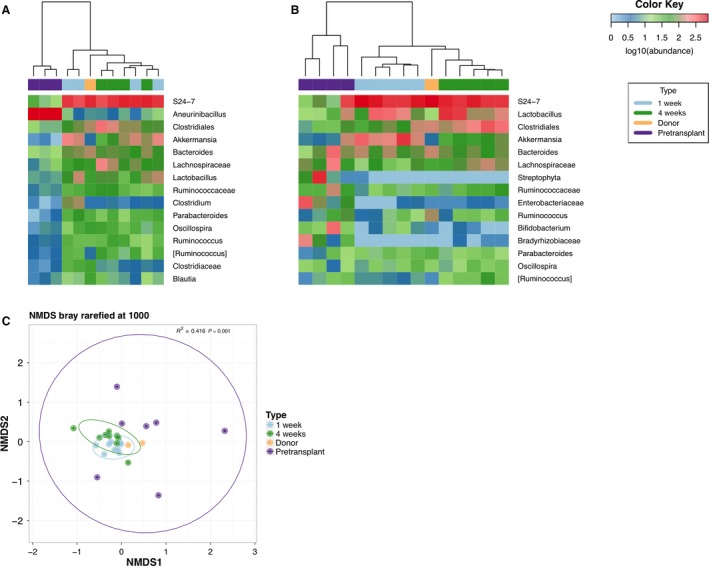Figure 1.

Fecal transplant into germ‐free mice. Two independent transplant experiments were performed with fecal pellets obtained from a single but different rat donor. Heat maps of the most abundant bacteria detected in the stool samples from (A) Rat donor 1 (yellow box) and from 4 fecal transplant recipient mice (note that at baseline in group A, n = 1 of the germ‐free pre‐transplanted mice did not have sufficient bacterial load to report and in group B n = 2 of the germ‐free pre‐transplanted mice did not have sufficient bacterial load to report), and from (B) Rat donor 2 (yellow box) and 5 recipient mice. Germ‐free recipient mice were sampled at baseline, 1 week and 4 weeks after fecal transplant. Hierarchical clustering in panels A and B indicate that both sets of mice acquired and maintained the donor's gut microbiome. (C) Community ordination using bray‐distances, visualized using non‐metric multidimensional scaling (NMDS) showed that there were significant community differences in the microbiome that could be explained using the transplant variables (R 2 = 0.416, P = 0.001). Prior to transplant the mice had a highly variable microbiome as indicated by the wide dispersion of samples across the NMDS plot, but formed tighter clusters surrounding the donors following transplant. Distribution of organisms at the genus level in stool samples are shown.
